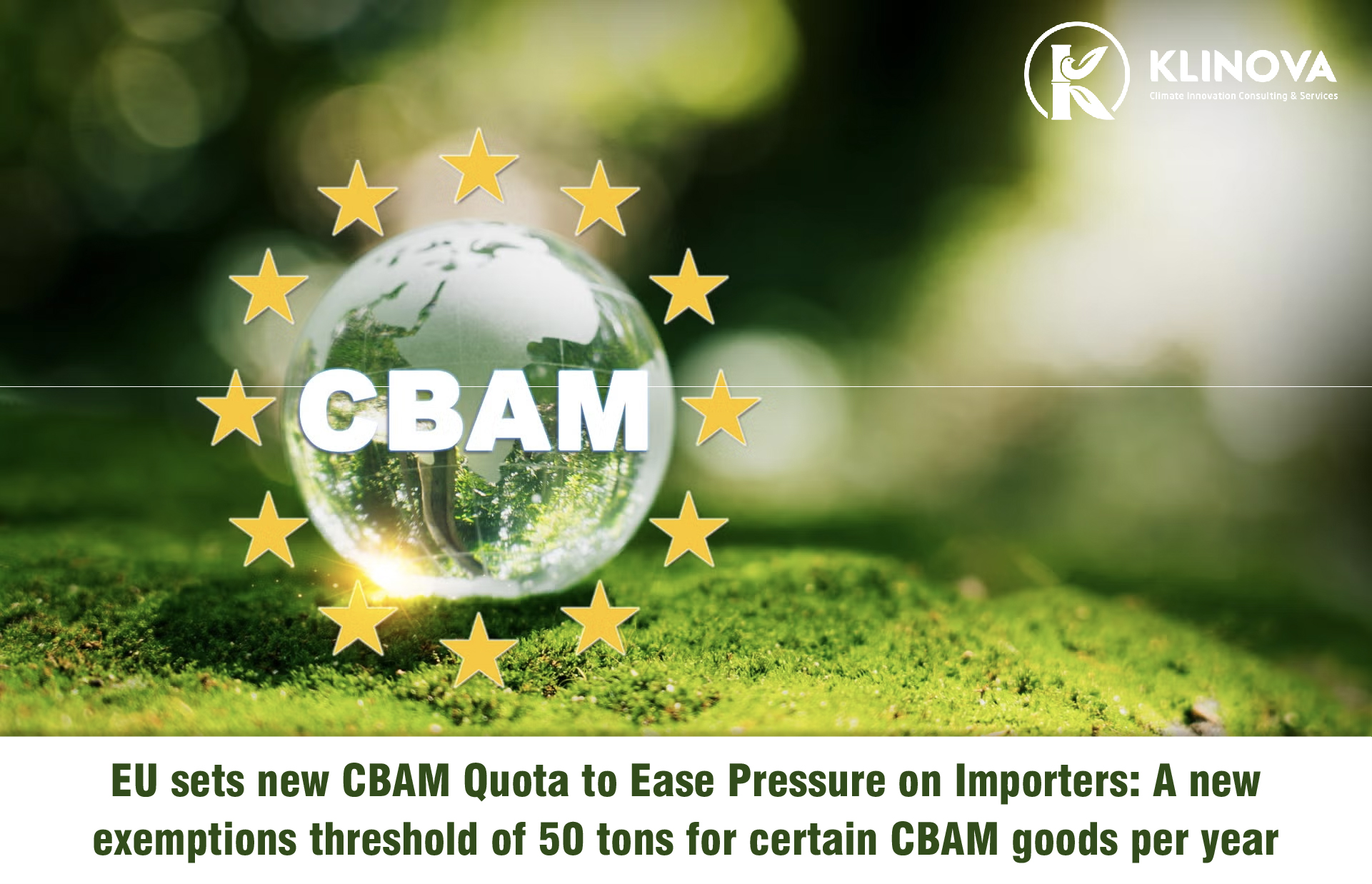CBAM - A key tool in the EU’s emission reduction strategy
CBAM is designed to protect EU manufacturers from unfair competition posed by imports with high carbon emissions originating from countries with less stringent environmental standards. The carbon border tax will apply to imported goods with significant emissions such as steel, cement, aluminum, and fertilizers, with the goal of ensuring fair competition and promoting green transition across the global supply chain..
Exemption for over 90% of importers
A notable change in the amended regulation is the exemption of over 90% of importers whose annual imported volume of carbon-intensive goods is below 50 metric tons. This decision significantly reduces administrative burdens and costs for small and medium enterprises while focusing enforcement on approximately 10% of importers responsible for over 99% of taxable emissions.

Significance and Impact of the policy
This change shows a fair balance between protecting the environment and supporting economic growth, making the policy more practical and easier for small and medium businesses to join the market without facing too much financial burden. At the same time, concentrating on high-emission importers ensures effectiveness in reducing greenhouse gas emissions, contributing substantially to the EU’s climate commitments under the Paris Agreement and global environmental goals.
Timeline and Outlook
In 2026, businesses will be required to purchase permits to offset the carbon emissions generated by importing goods such as steel, cement, aluminum, and fertilizers. Additionally, the sale of these permits has been postponed and is now scheduled to begin in 2027. The amended regulations are currently undergoing final negotiations with EU member states before formal adoption.
CBAM is not just a tax, it clearly reflects the EU’s commitment to building a sustainable and environmentally friendly economy. Granting exemptions to most importers is a sensible decision that reduces financial pressure on small businesses while keeping the focus on companies with the highest emissions. This policy serves as a model for other countries and encourages global businesses to take greater environmental responsibility, supporting the shift toward greener and more sustainable production and business models. In addition, it sends a positive signal to investors, partners, and consumers, who are increasingly looking for products and services that demonstrate strong environmental responsibility.